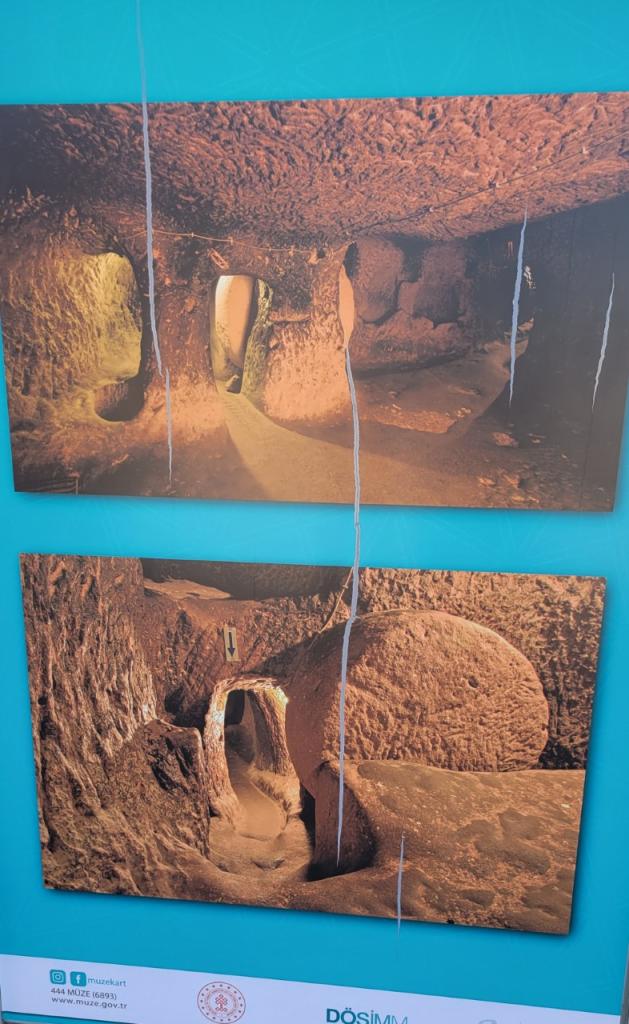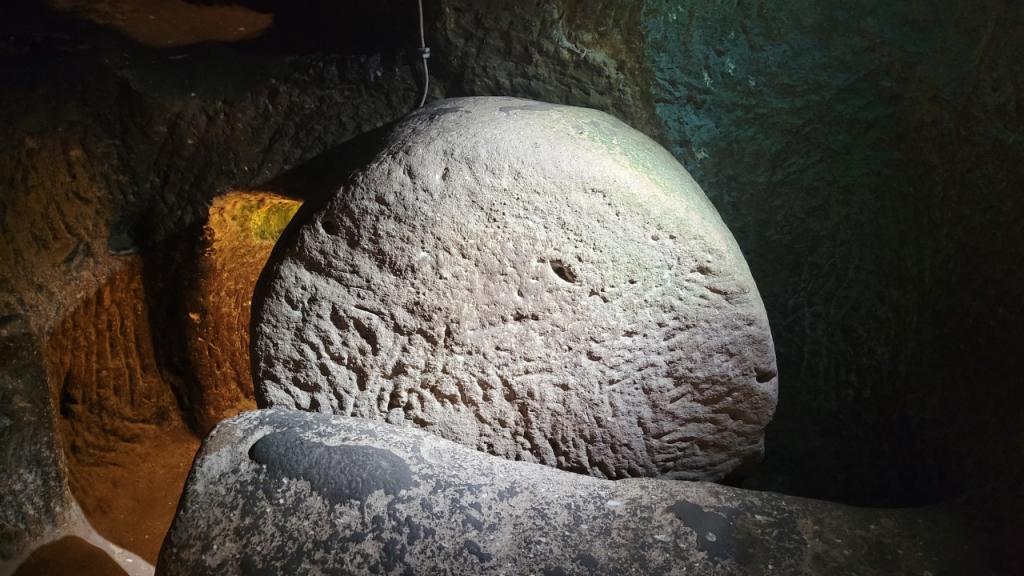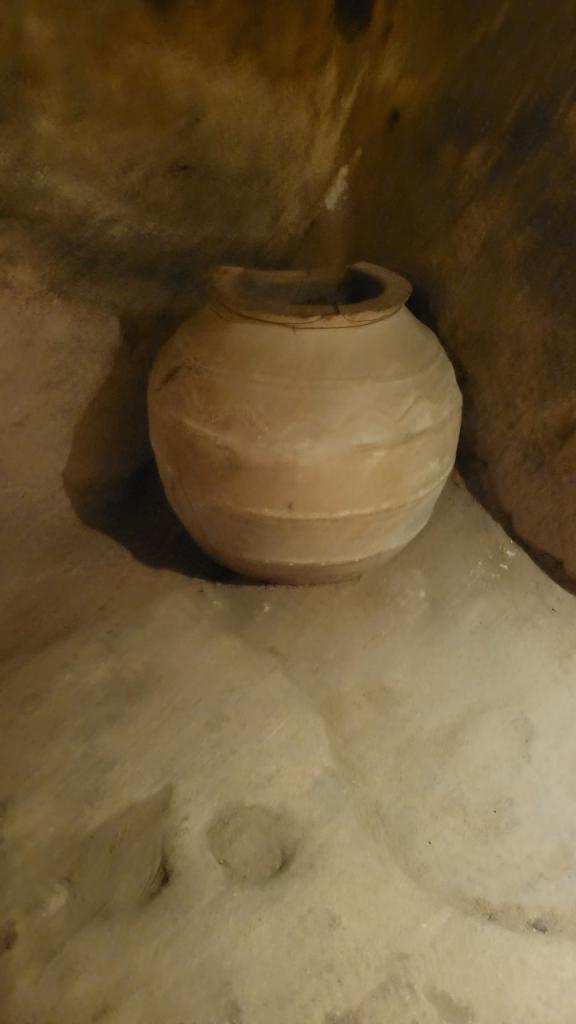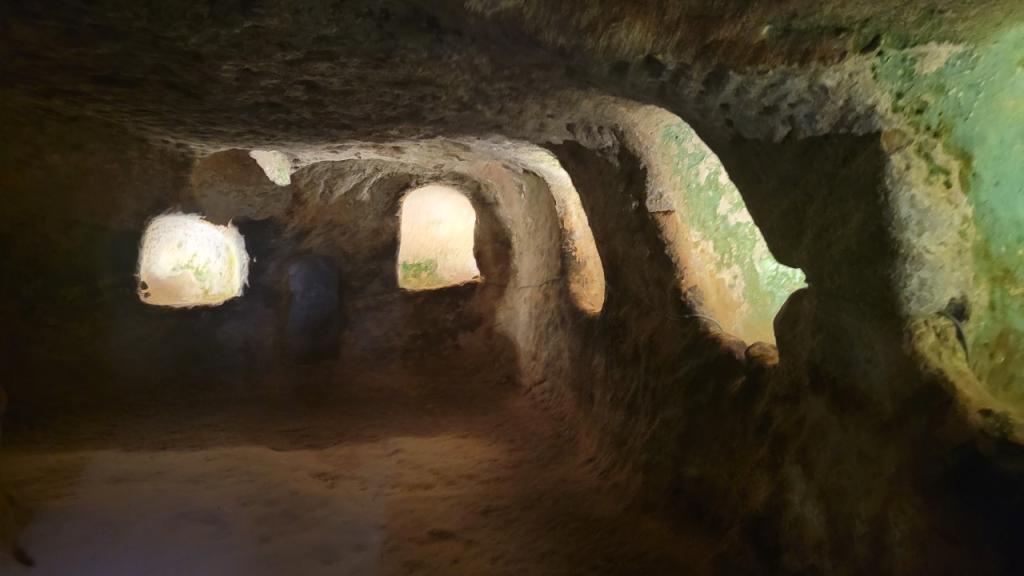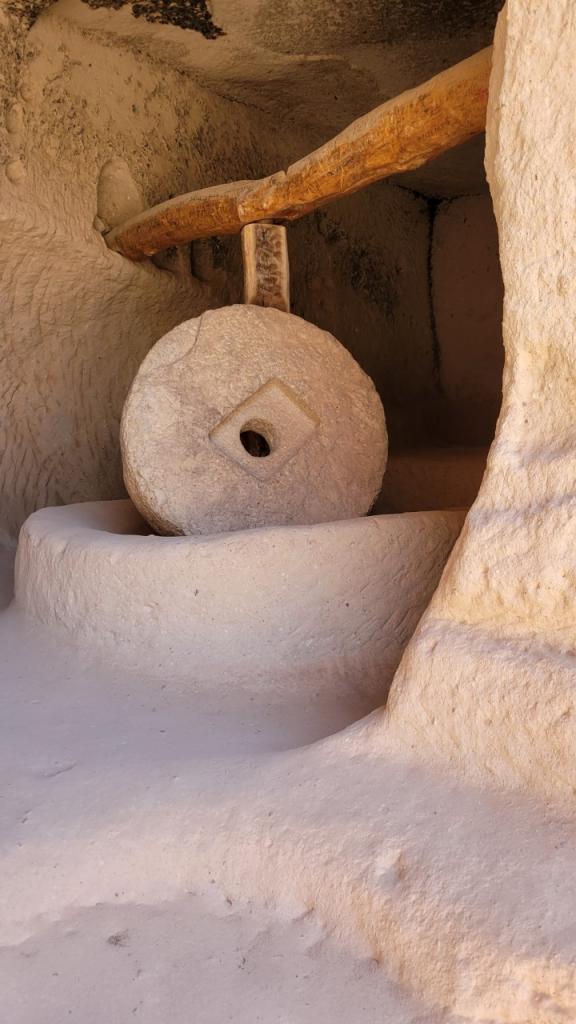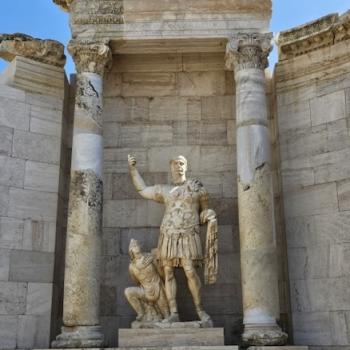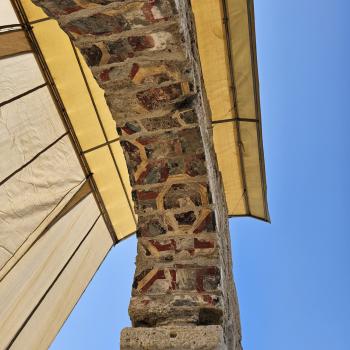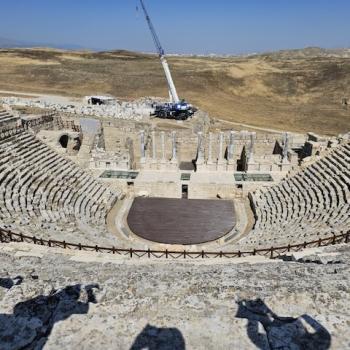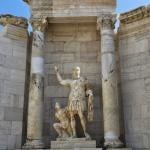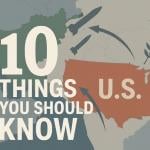Hebrews 11 reminds of how often God’s people have suffered. Near the end of the Hall of Faith in that chapter we hear this starting at vs. 35—
“There were others who were tortured, refusing to be released so that they might gain an even better resurrection. Some faced jeers and flogging, and even chains and imprisonment. They were put to death by stoning; they were sawed in two; they were killed by the sword. They went about in sheepskins and goatskins, destitute, persecuted and mistreated— the world was not worthy of them. They wandered in deserts and mountains, living in caves and in holes in the ground.” And Christians were not the first to live underground. Indeed, Xenephon’s Anabasis in about 370 B.C. mentions not only people living in caves in the Cappadocian region but even underground….
There are in fact small and large underground cities in the Cappadocian region and we will now examine one of the smaller ones….. here is an aerial view that shows the general terrain with lots of hills and tufa rock which can be carved…
One of the most interesting features of these underground cities is the use of the same sorts of rolling stones to seal off areas from the outside world, and this particular underground city has several of the the deeper you go down in the levels of the city….
There were rooms for sleeping, rooms for eating, rooms for storing food and water and other essentials….
The rooms have lower ceilings than we would be used to, and increasingly so the further down in the city you go.
In some of these underground cities (of which there are up to 200 in the country in general) in this region there were in fact even elaborate rooms, for example a school room…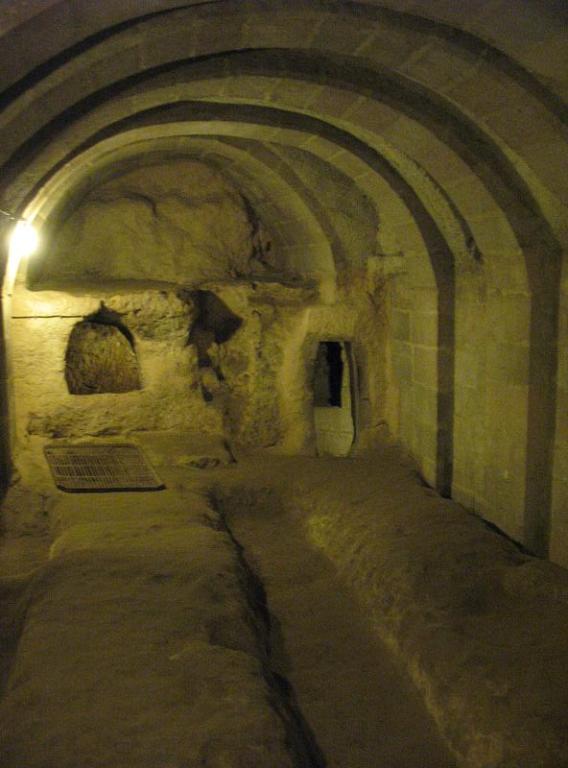
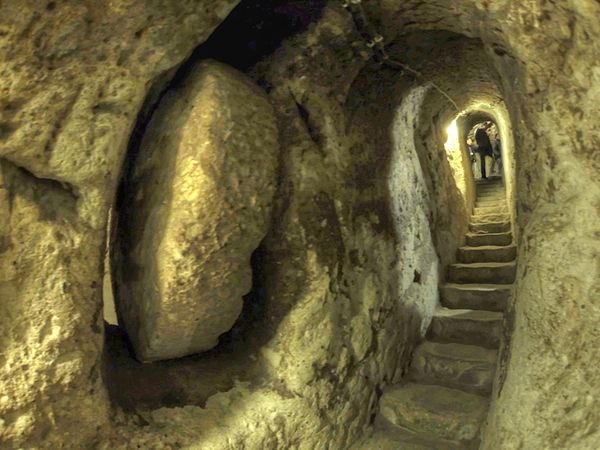
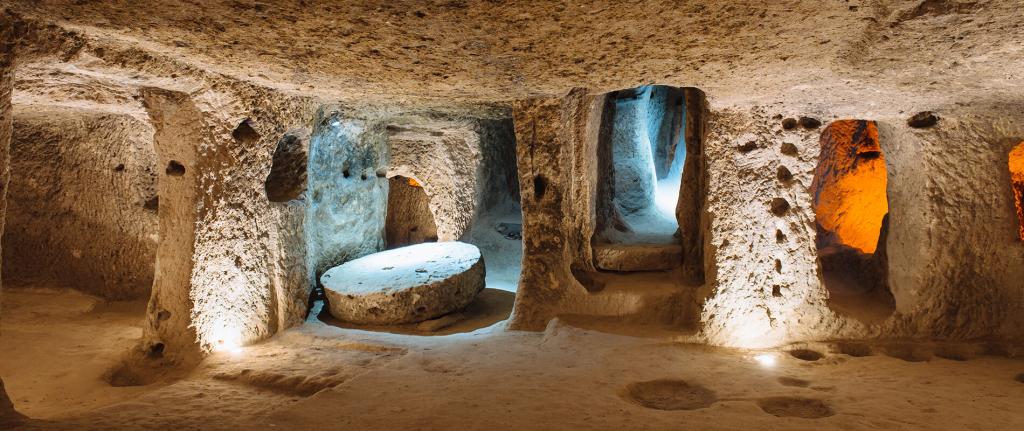
They have found olive presses, wine presses and other signs of the production of foodstuffs underground.
But there are also a lot of these in the cliffs above the caves and near the underground cities—- dovecotes. 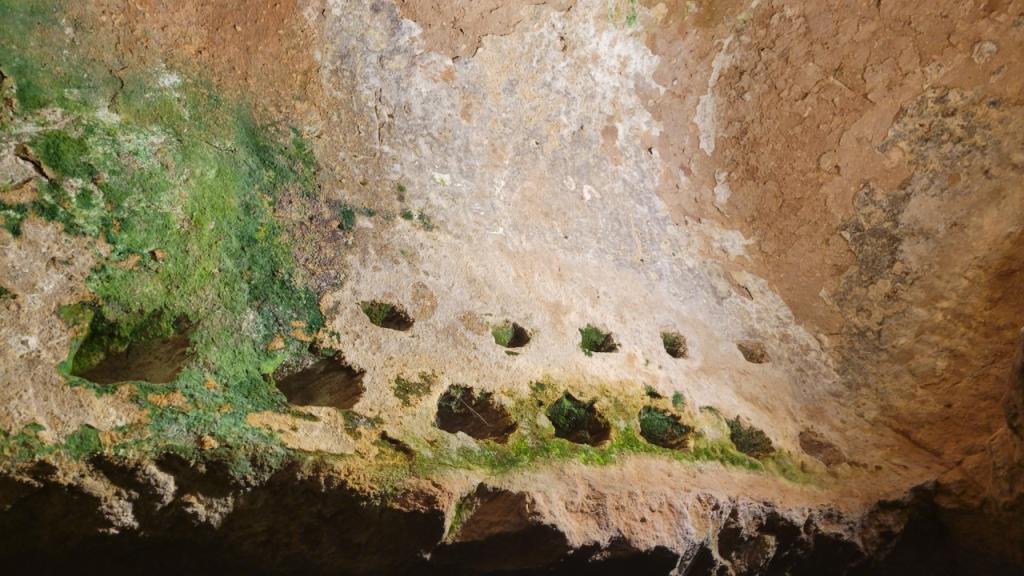
Doves were raised and they provided eggs and also sometimes were eaten as well. But there is so much more to Cappodocia than just underground cities. Next we will check out the Goremi Open Air Museum, with its numerous cave churches and monasteries.



